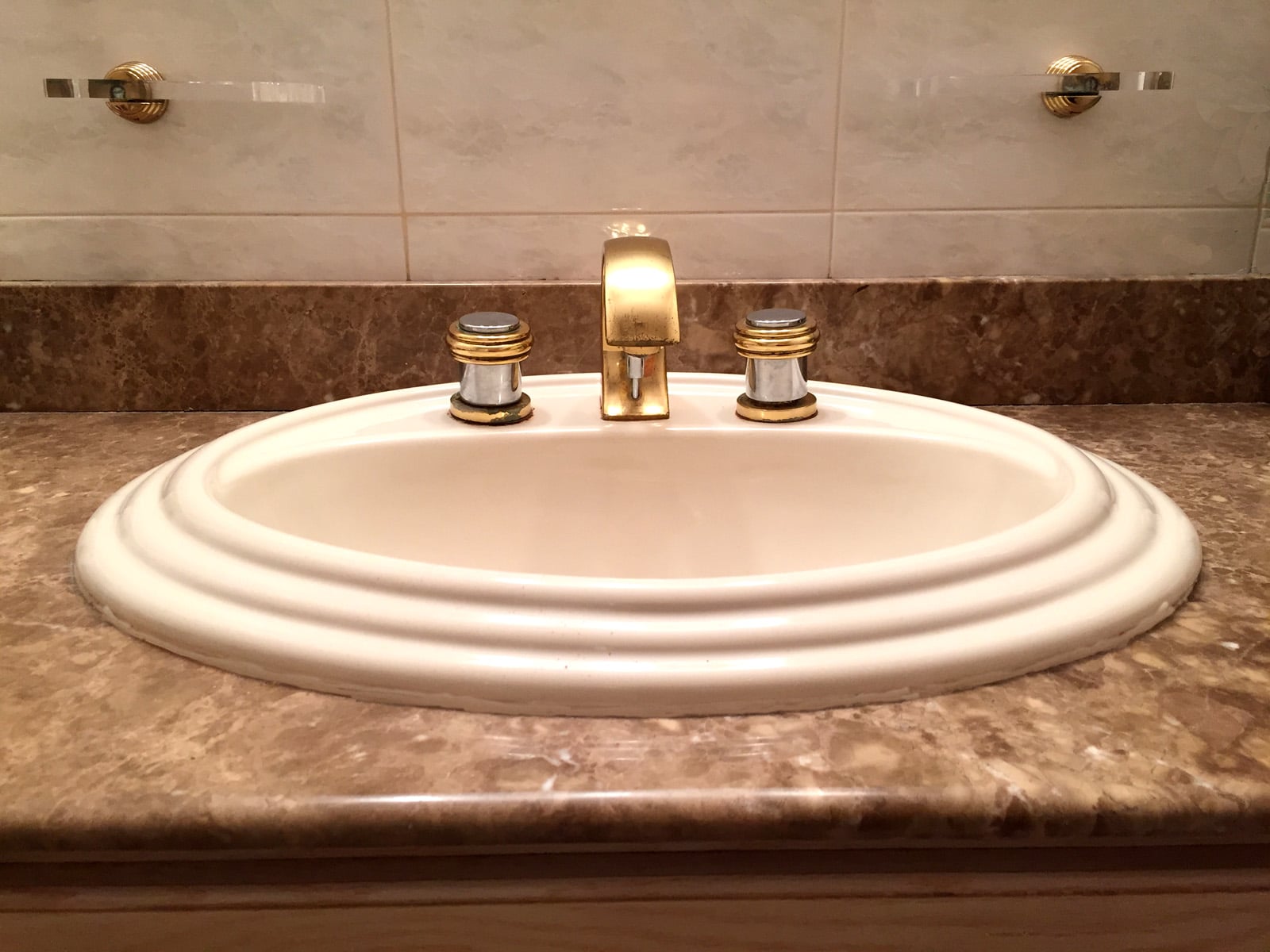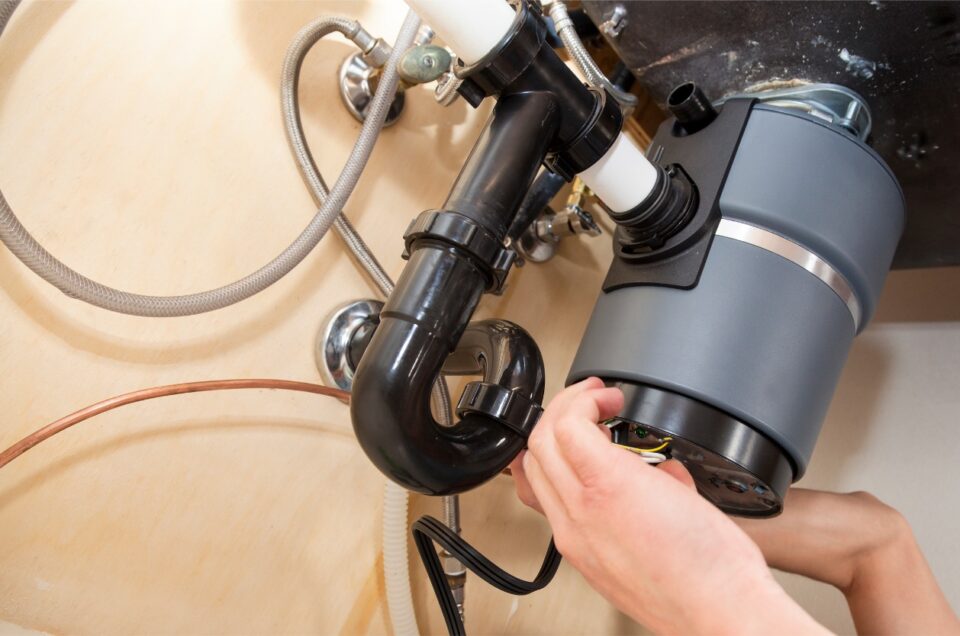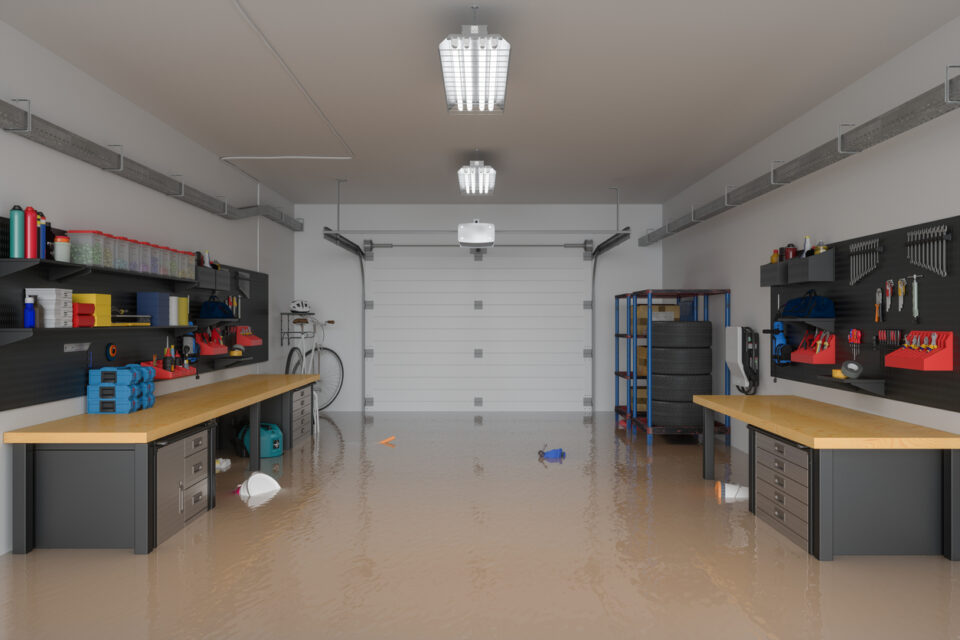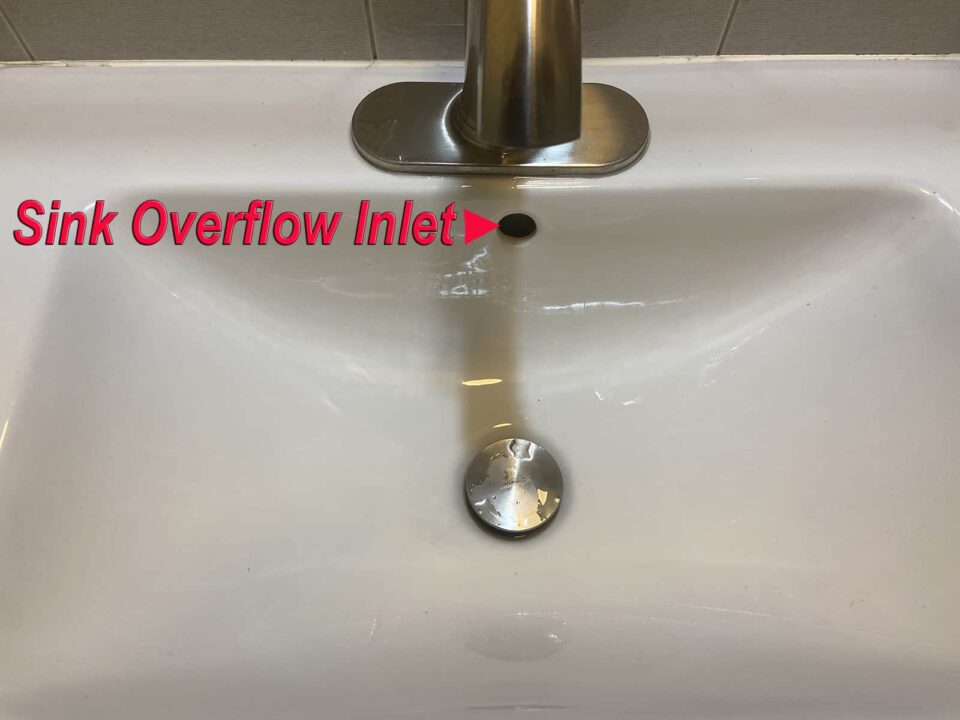In simple terms, plumbing air gaps are the simplest backflow prevention method. In a plumbing system, potable water and wastewater are intended to flow through different pipes to avoid contamination. Even with this design, there is always a risk of backflow, after which wastewater cannot properly find the right pipe and enters the freshwater supply line.
The most effective method to avoid this issue is by using a backflow device. Air gap is the simplest form of such a device. In fact, it is not a device at all, since an air gap is basically an empty unobstructed vertical space that prevents potable and non-potable water from intermingling. An air gap is usually found in the following appliances or fixtures.
Kitchen Dishwasher Air Gaps
The term “air gap” is most commonly used in plumbing discussions, referring to a fixture or plumbing arrangement that acts as a backflow preventer incorporated into a dishwasher installation. A dishwasher is connected either directly to a drain pipe under a sink or indirectly through a garbage disposal in the same location.
To create an air gap, a plumber uses a small cylindrical device mounted on the countertop parallel to a faucet. Inside the device, there are two tubes separated by an empty space which functions as an air gap.
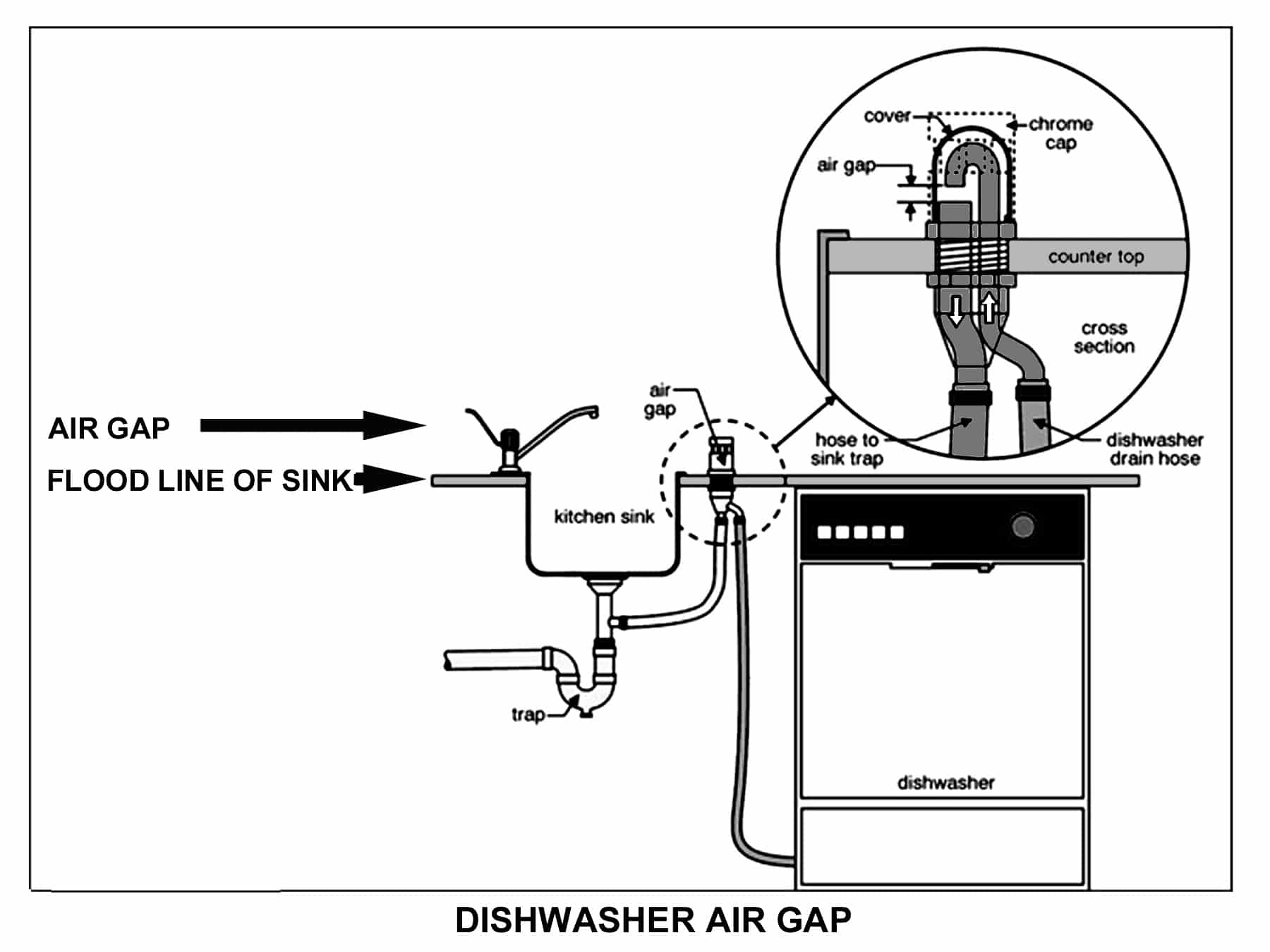
The drain hose of the dishwasher goes upward and feeds the “upper” tube; the lower tube is connected to the drain pipe either directly or through a garbage disposal. Wastewater from a dishwasher will enter the cylindrical device through the upper tube, and then flow into the lower tube towards the drain pipe.
If installed properly, this design effectively prevents dirty water from backing up to the dishwasher. When the dishwasher is in use, dirty water should not flow to a connected sink as well. A simple illustration of how a dishwasher air gap works and connects to the sink directly without garbage disposal can be seen in the image above. It is important to note that the air gap is placed above the flood line of the sink itself.
*The original image appears in the official website of InterNACHI (International Association of Certified Home Inspector). We have edited it to better illustrate important points.
A Sink Air Gap
The most common example of an air gap is in the design of a sink, and the water faucet attached to it. There must be a considerable vertical distance between the faucet (water outlet) and the sink rim. Water can easily fall from the outlet to the sink, but there is no way that water can jump back into the faucet even when the sink is full, or even overflowing. All contaminants remain in the sink itself, and will not affect potable water.
An air gap should never be tampered with. As an example, a hose should never be added to the end of a faucet. This can result in the hose lying under contaminated sink water. If back pressure should occur, it can force the contaminated water into your drinking water supply. This can result in very serious and hard-to-cure health and plumbing issues.
Without an air gap between the water outlet and the sink rim, the water in the sink can flow back into the outlet under the right circumstances, for examples the loss of pressure from the water supply, or a sink located higher than the water supply entry point. These may seem like obscure occurrences, but the ramifications can be severe.
Causes of a drop in water pressure
Low water pressure, or a loss of pressure, is not uncommon in plumbing systems; it can happen for many reasons:
- Pipe leak or main water line break
Because a considerable amount of water flows out through the leaking point in a defective supply pipe, the pressure is greatly reduced when the water reaches an entry point in the house. This can create back pressure, which can potentially introduce contaminants into the water supply. This is the condition that an air gap prevents.
- Corrosion
Even the most invulnerable of pipe materials is still subject to wear and tear such as corrosion. Constant exposure to water causes metal materials to corrode, harden, and lose some of their original properties. Rust and sediment will accumulate over time and block the flow of water.
- Clogging
The introduction of debris and sediment can happen when an underground water supply pipe cracks.
- Water supply malfunctions
The municipal water supply is not indestructible. It is subject to leaks and other problems which cause malfunctions, hence low pressure. A main line break routinely causes severe back pressure and potential quality of drinking water issues.
- Unexpected high demand
A water supply can lose pressure when big water outlets are opened at the same time, for example when several fire hydrants are required to put out a fire or on a hot summer day.
If you connect an outlet to the sink below it with a hose, low pressure can draw potentially contaminated water in the sink to the water supply. The hose, in this case, eliminates the air gap, as stated previously – never do this!
The Importance of an Air Gap In Plumbing
An air gap must remain in place and in working order to make sure that there is no contaminated potable water in the house. Anytime a cross connection occurs, it poses a serious health hazard risk not only to water in your home but also in the entire public supply. Once contaminants enter any portion of the water supply, since it is a shared system, all are put at risk. Potable and non-potable water should flow through different pipes, and this is where the air gap comes in. A cross connection can happen immediately after you have a sewer backup problem or a loss of pressure in the freshwater supply line.
The use of an air gap in a dishwasher installation system, sink, or faucet may not required in all places depending on the plumbing code, but it should be. It is most definitely required in NYC, and most major cities as well. In places where an air gap is not mandatory, cross connection protection and backflow devices are still necessary.
Consult a professional plumber to figure out whether you need an air gap or other alternatives to prevent a breakout of pathogens. Never take a plumbing shortcut, or improvise through ignorance, when it can affect your family’s health and that of your community.

